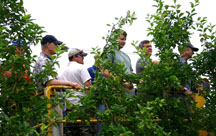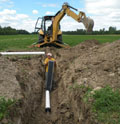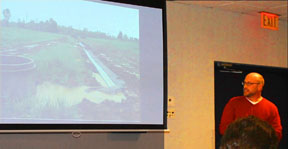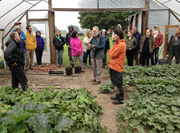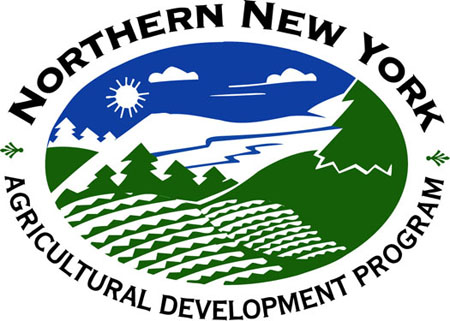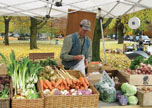NNYADP Project: Precision Orchard Management Supports Success of NNY Apple Industry
Photo: Cornell University Horticulture Professor Terence Robinson, 2nd from right, conducts a precision management tour in a NNY apple orchard. Photo: Kevin A. Iungerman
Northern New York; September 15, 2015. Excellent is how Cornell University Horticulture Professor Terence Robinson describes the results of precision orchard management trials at four Northern New York apple orchards. The trials funded by the farmer-driven Northern New York Agricultural Development were designed to help regional apple growers increase orchard efficiency and profitability.
The NNY regional apple industry harvests $16 million worth of farm gate net revenue from approximately 5,000 acres of orchards. Growers are increasingly adopting practices that research data shows increase the percentage of crop harvested in the highest price categories based on fruit size, color and quality.
Over the past 10 years, Robinson has developed a precision thinning protocol that provides apple growers with real-time data for the best timing and rates for growth inhibitor spraying applications that reduce bud count. Reducing the number of early season buds encourages the growth of a precisely targeted optimal number of apples.
Success with the precise management practice known as orchard thinning saves growers labor, time, and expense.
Cornell Cooperative Extension Fruit Specialist Anna Wallis assisted Robinson with field trials in Honeycrisp plantings at four orchards in Chazy and Peru, NY. The growers counted flower buds, calculated the target number of fruits per tree to achieve a desired high yield, and measured fruit diameter. The Cornell research team analyzed the data and within 24 hours provided each grower an exact assessment of orchard cropload with recommendations for the next thinning application to maintain harvest goals.
Two of the northern NY apple growers also hosted precision harvest research trials to learn if measuring a set of factors prior to harvest could be used to predict fruit quality to assist growers in separating fruit for short-term or longer storage opportunities.
The Northern New York Agricultural Development Program has granted new funding for precision apple orchard management trials in 2015. More details and the Precision Orchard Management Strategies for NNY Apple Growers to Increase Profitability research report are online at www.nnyagdev.org.
Funding for the Northern New York Agricultural Development Program is supported by the New York State Senate and administered through the New York State Department of Agriculture and Markets.
